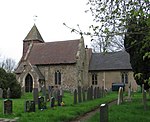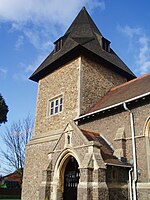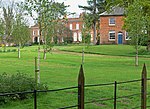Hinckley and Bosworth
Boroughs in EnglandHinckley and BosworthNon-metropolitan districts of LeicestershireUse British English from June 2012

Hinckley and Bosworth is a local government district with borough status in Leicestershire, England. The council is based in Hinckley, the largest town. The borough also includes the town of Earl Shilton and numerous villages and surrounding rural areas. The Bosworth in the borough's name refers to the small market town of Market Bosworth, near which the Battle of Bosworth Field was fought in 1485. The neighbouring districts are North West Leicestershire, Charnwood, Blaby, Rugby, Nuneaton and Bedworth and North Warwickshire.
Excerpt from the Wikipedia article Hinckley and Bosworth (License: CC BY-SA 3.0, Authors, Images).Hinckley and Bosworth
Hinckley and Bosworth Newbold Verdon
Geographical coordinates (GPS) Address Nearby Places Show on map
Geographical coordinates (GPS)
| Latitude | Longitude |
|---|---|
| N 52.6125 ° | E -1.3536111111111 ° |
Address
Newbold Verdon
Hinckley and Bosworth, Newbold Verdon
England, United Kingdom
Open on Google Maps










